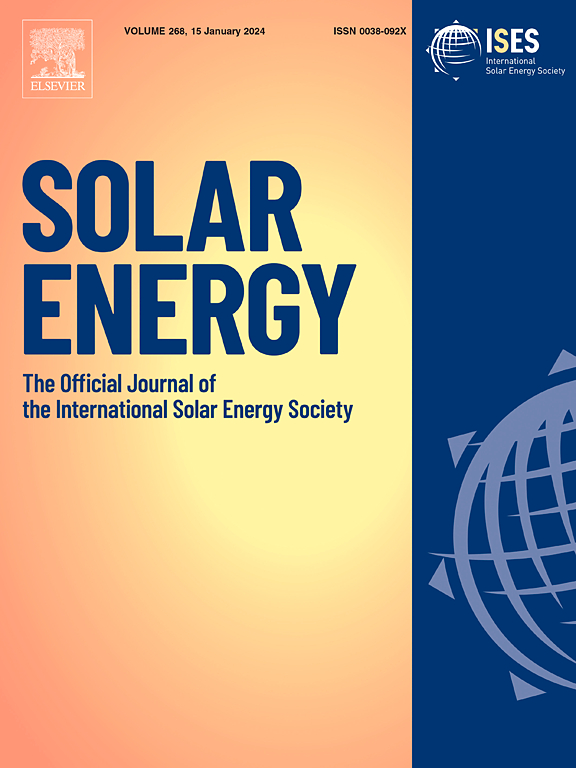Heat dissipation in perovskite solar cells with different grain shapes
IF 6
2区 工程技术
Q2 ENERGY & FUELS
引用次数: 0
Abstract
Heat dissipation in solar cells has been rarely presented in the literature despite a critical role in the thermal and electrical stability of these thermodynamic devices. We have simulated the heat dissipation through the grain structure of perovskite solar cells assuming grains with the single large size and shapes to facilitate the simulation of randomly shaped grains in real devices. To facilitate this, we converted the randomly shaped grains into large single rectangular and cylindrical grains and developed a coupled electrical-thermal model to investigate the heat dissipation and temperature distribution across the grain interior and boundaries. Heat generation via non-radiative recombination and joule heat (in bulk) and tail state recombination heat (in grain boundaries) versus the radiative and convective cooling were inserted in the calculations. It seems that grain geometry and shape (width, length, and thickness) have a vital impact on heat dissipation from the interior bulk of grain, and the grain boundaries act as cooling sources for the perovskite layer. The cylindrical-shaped grain shows a better cooling capability because of a smaller contact area with adjacent grains. The cylindrical grains can also compensate for the disadvantage of high surface traps, short carrier lifetime, and high surface recombination velocity at grain boundaries and protect the heat-sensitive perovskite layer against heat accumulation and decomposition.
不同颗粒形状钙钛矿太阳能电池的散热
尽管在这些热力学装置的热稳定性和电稳定性中起着关键作用,但太阳能电池中的散热在文献中很少出现。我们模拟了钙钛矿太阳能电池晶粒结构的散热,假设晶粒具有单一的大尺寸和形状,以便于在实际设备中模拟随机形状的晶粒。为了实现这一点,我们将随机形状的晶粒转化为大的单个矩形和圆柱形晶粒,并建立了一个耦合的电-热模型来研究晶粒内部和边界的散热和温度分布。通过非辐射复合产生的热量和焦耳热(散装)和尾态复合热(晶界)与辐射和对流冷却的对比被插入到计算中。晶粒的几何形状(宽度、长度和厚度)似乎对晶粒内部的散热有重要影响,而晶界是钙钛矿层的冷却源。圆柱形晶粒与相邻晶粒的接触面积较小,具有较好的冷却性能。圆柱形晶粒还可以弥补晶界处表面陷阱高、载流子寿命短、表面复合速度快的缺点,保护热敏钙钛矿层不受热积累和分解的影响。
本文章由计算机程序翻译,如有差异,请以英文原文为准。
求助全文
约1分钟内获得全文
求助全文
来源期刊

Solar Energy
工程技术-能源与燃料
CiteScore
13.90
自引率
9.00%
发文量
0
审稿时长
47 days
期刊介绍:
Solar Energy welcomes manuscripts presenting information not previously published in journals on any aspect of solar energy research, development, application, measurement or policy. The term "solar energy" in this context includes the indirect uses such as wind energy and biomass
 求助内容:
求助内容: 应助结果提醒方式:
应助结果提醒方式:


